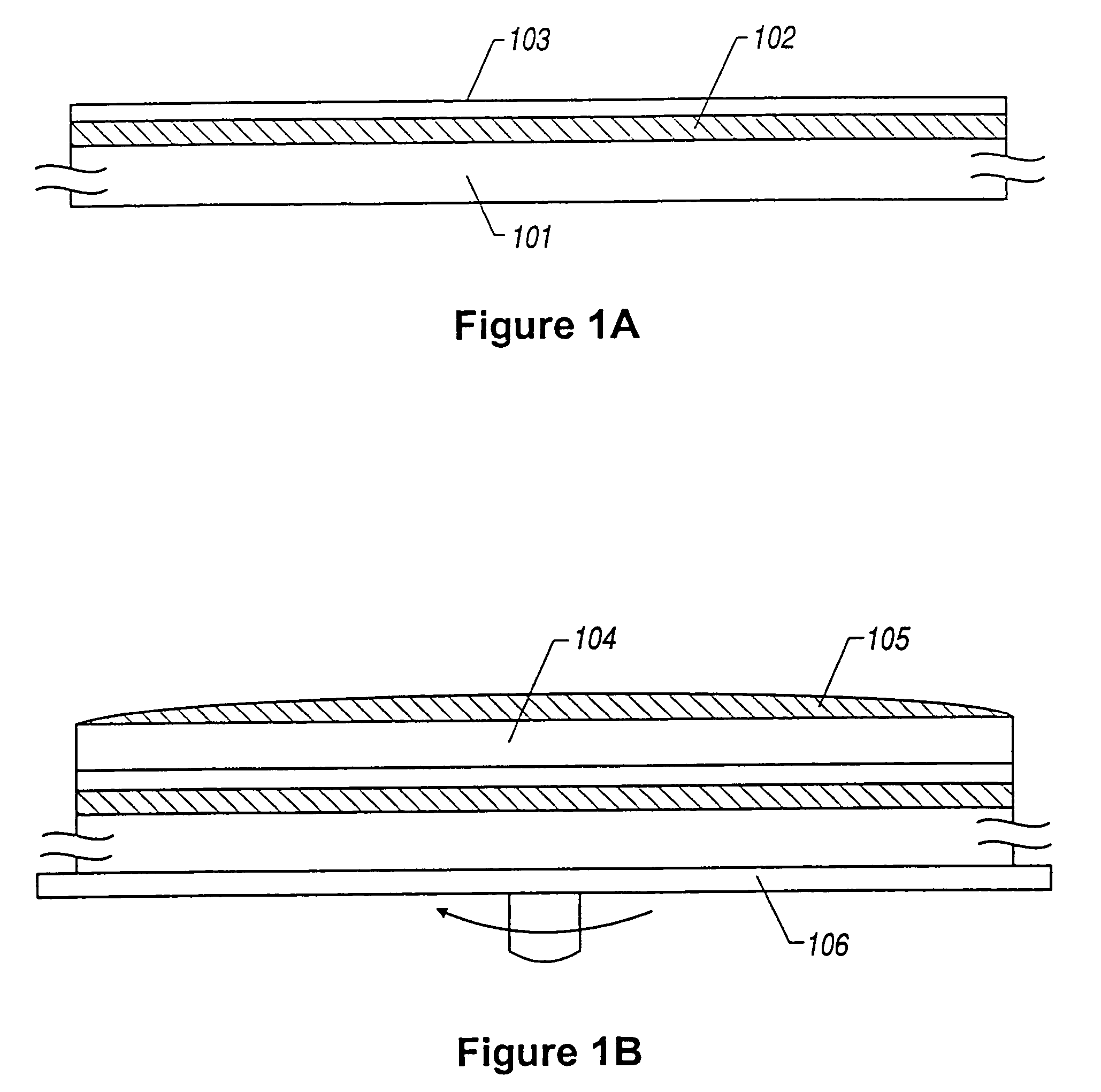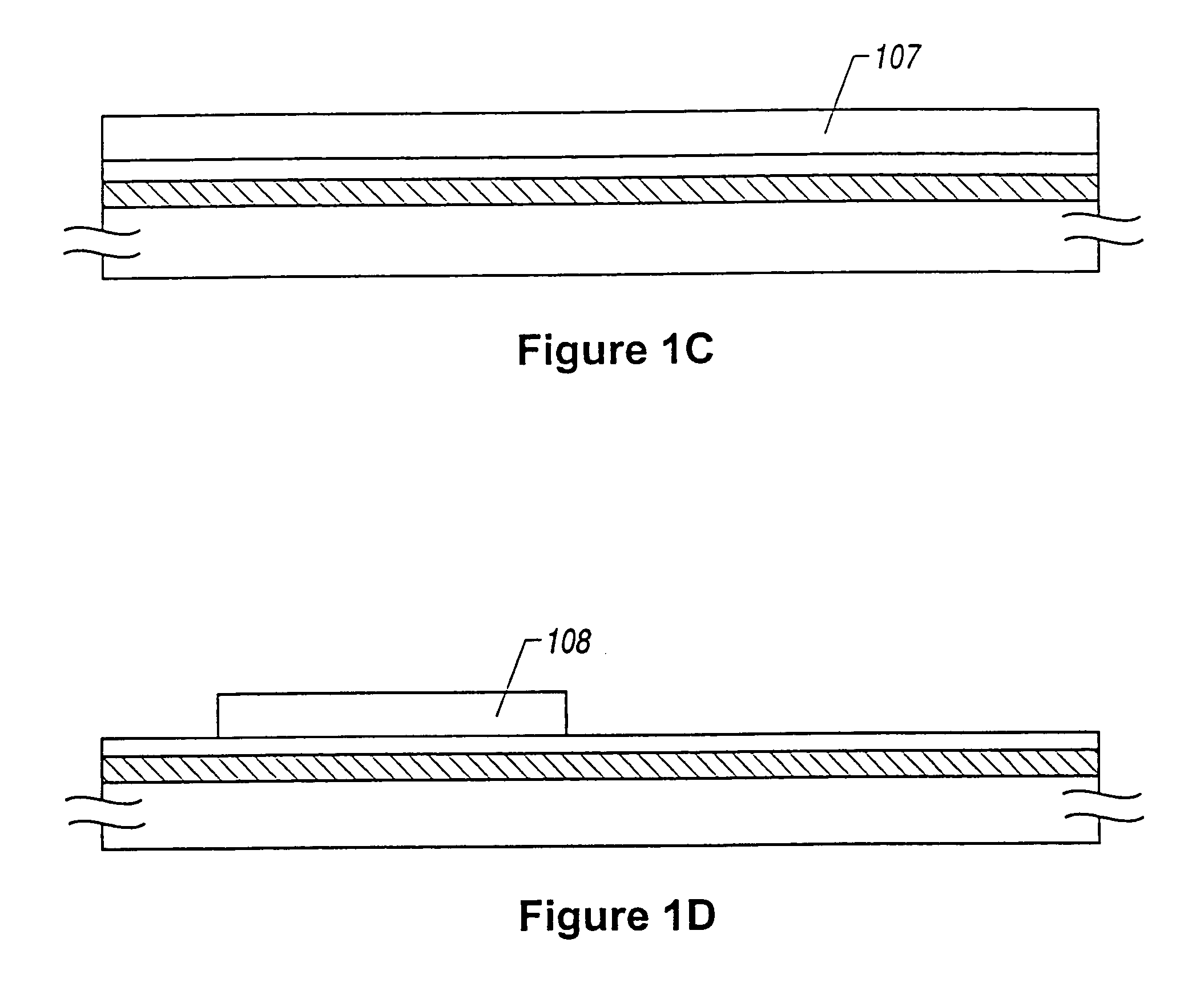Method of manufacturing a semiconductor device
a manufacturing method and semiconductor technology, applied in the direction of identification means, instruments, optics, etc., can solve the problems of difficult to manufacture thin-film transistors on their surface, low heat resistance of resin substrates, and difficult to improve such characteristics in view of the relationship of substrates as used, etc., to promote silicon crystallization and simple use of solvents
- Summary
- Abstract
- Description
- Claims
- Application Information
AI Technical Summary
Benefits of technology
Problems solved by technology
Method used
Image
Examples
first embodiment
[0100]A first embodiment relates to an example in which a liquid-crystal display thin-film integrated circuit having a large area which has been fabricated on a glass substrate at a low-temperature process of 550° C. or lower is transferred from the glass substrate onto a PET (polyethylene terephthalate) which is of a flexible substrate to constitute an active matrix liquid-crystal display unit which can be disposed even on a curved surface. More particularly, in this embodiment, the structure of a pixel region will be described. In this description, a liquid-crystal display unit is shown as one example, however, a technique described in this specification is available to the EL-type display unit.
[0101]First, a glass substrate 101 is prepared. Fine concave portions have been formed on a surface of the glass substrate 101 in advance. In this example, the concave portions are several thousands Å to several μm in width and height, several to several tens μm in depth, and shaped in the ...
second embodiment
[0127]A second embodiment is an example in which Cu (copper) is used as a metal element that promotes the crystallization of silicon in the process described with reference to the first embodiment. In this embodiment, copper elements are introduced using copper (II) acetate (Cu(CH3COO)2) solution. The density of the copper elements in that solution is adjusted so that the density of copper elements that remain in a final silicon film is set to 1×1016 to 5×1019 atms cm−3.
[0128]In the case of using Cu as the metal element that promotes the crystallization of silicon, a heat treatment for crystallization is conducted under a condition of 580° C. and 4 hours. This is because Cu is slightly small in function that promotes the crystallization of silicon in comparison with Ni. Other structures and process conditions are the same as those shown in the first embodiment.
third embodiment
[0129]A third embodiment shows an example in which a silicon film having a monocrystal-like region or substantially monocrystal-like region is formed on a glass substrate, and the active matrix liquid-crystal display unit having a flexible structure is constituted using this silicon film.
[0130]In this example, a Corning 7059 glass substrate (warp point 593° C.) is used as a glass substrate 501. Lattice-like or stripe-like grooves which are several μm in width and several to several tens μm in depth have been formed in advance.
[0131]First, a peeling layer 502 is formed on a glass substrate 501. The peeling layer 502 is of a silicon oxide film using the above-mentioned OCD solution. In this situation, fine gaps are formed on the bottom portion of the grooves because of the existence of the above-mentioned grooves.
[0132]Then, a silicon oxide film 503 is formed on the peeling layer 502 through the plasma CVD technique using the TEOS gas. Since the silicon oxide film 503 serves as a supp...
PUM
| Property | Measurement | Unit |
|---|---|---|
| etching rate | aaaaa | aaaaa |
| temperature | aaaaa | aaaaa |
| temperature | aaaaa | aaaaa |
Abstract
Description
Claims
Application Information
 Login to View More
Login to View More - R&D
- Intellectual Property
- Life Sciences
- Materials
- Tech Scout
- Unparalleled Data Quality
- Higher Quality Content
- 60% Fewer Hallucinations
Browse by: Latest US Patents, China's latest patents, Technical Efficacy Thesaurus, Application Domain, Technology Topic, Popular Technical Reports.
© 2025 PatSnap. All rights reserved.Legal|Privacy policy|Modern Slavery Act Transparency Statement|Sitemap|About US| Contact US: help@patsnap.com



